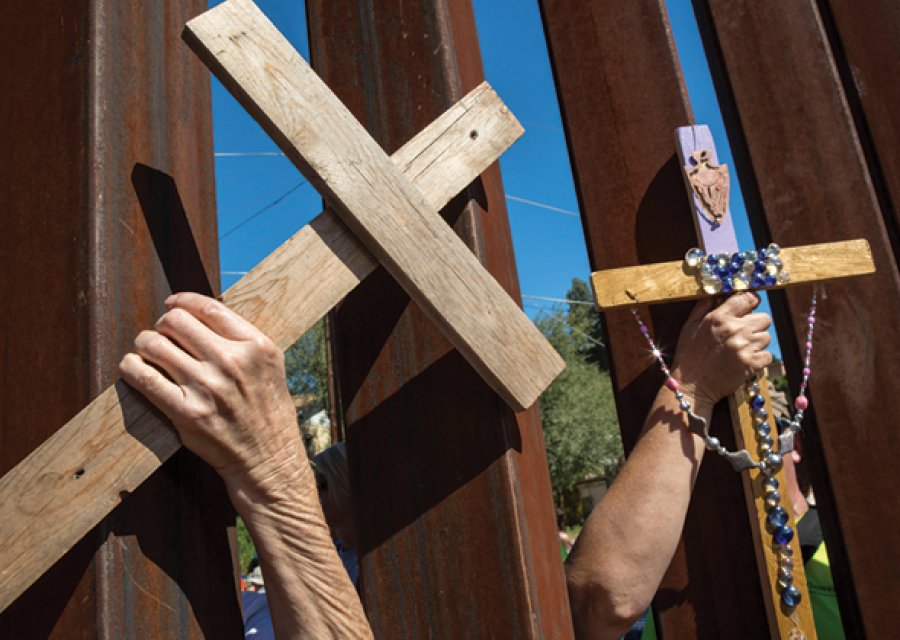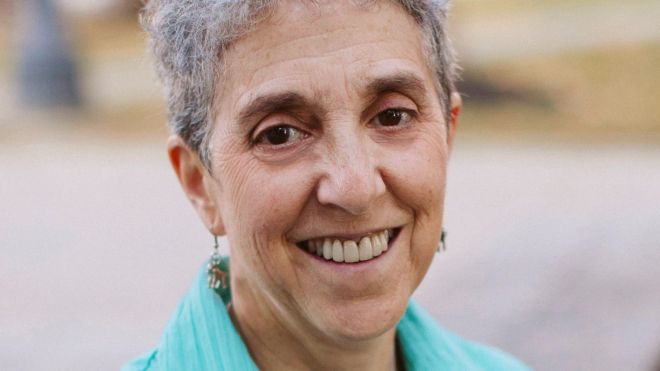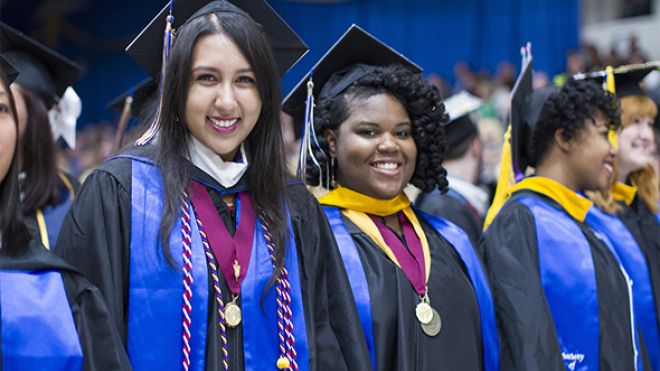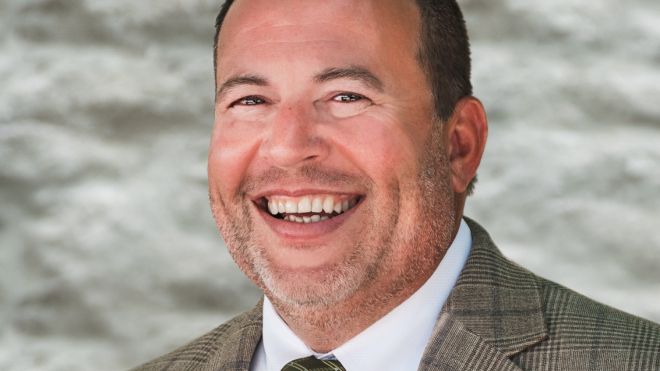
BUFFALO, NY - Along a rugged expanse of the Arizona-Mexico border looms an imposing, rust-colored wall. Made of structural steel beams, each separated by four-inch gaps – just wide enough to peer through – the 10-mile stockade reaches upwards of 20 feet. The barrier cuts through rolling hills, steep ravines and barren desert. It also severs in half the city of Nogales, a key deportation point for thousands of undocumented men, women and children in the United States. And much like the physical wall that separates it, the public and political rhetoric that has besieged this split city has made it ‘ground zero’ in a new cultural divide.
Hoping to bridge this divide, albeit even slightly, is a group of Canisius students who journeyed to Nogales for a one-week immersion that exposed them to the realities of immigration. Though they acknowledge that migrants who cross into the U.S. without authorization break the law, the students also question whether U.S. law is breaking the migrants.
“Regardless of where you stand on the issue, the people who are trying to migrate to the U.S. are just that – people,” says Monica W. Wrobel ’17, a student leader in Nogales. “It’s easy to forget the human element when we’re so far removed.”
Wrobel was one of several students who participated in the Kino Border Initiative (KBI) offered by the Office of Campus Ministry. Founded by Jesuits, the binational organization ministers to migrants newly deported from the U.S. to Nogales, Mexico, while playing host to students and scholars who want to learn more about the complex realities of U.S.-Mexico border and immigration policies.
“With KBI as our guide, we essentially walked the same path that migrants do, from their immigration into the U.S., to their apprehension and deportation,” explains student leader Alexandria M. Iwanenko ’17.
Students traversed a migrant trail along a remote portion of the Sonoran desert. The terrain is hostile and conditions extreme but undocumented immigrants are willing to risk the minimum two-day journey to gain entry into the U.S. Sadly, many do not survive and succumb to heat stroke, dehydration, exhaustion or injury from poisonous snakes and insects.
“While walking the route, KBI showed us a backpack filled with items that had been left behind by people and families,” recalls Mitchell W. Beiter ’20. “In it were clothes, a baby bottle and a Spanish-to-English dictionary. I couldn’t help but wonder what happened to those people or whether they survived. It just made everything so real.”
Those who do survive are often apprehended by authorities. Last year, the U.S. Border Patrol recorded nearly 409,000 arrests of migrants along the Southwestern border. Students spent an afternoon with the men and women tasked with enforcing immigration law, and engaged in “respectful dialogue,” says Sarah E. Signorino ’04, MS ’09, ’12, assistant director of campus ministry.
“The Kino Border Initiative is very intentional about providing students with opportunities to ask questions with all parties directly affected by immigration,” she says. “With informed consciences, students are able to formulate their own opinions.”
Iwanenko concurs that her time at U.S. Border Patrol helped her realize “the officers are not the enemy.” Rather, she says, “they’re responsible for enforcing a flawed legal system.”
And one that culminates in a federal courtroom. It’s here that students witnessed the zero-tolerance, fast-track prosecutions of undocumented immigrants via Operation Streamline.
“These men and women are brought into the courtroom, 70 at a time, for what’s really a dehumanizing ordeal,” explains Beiter. “They haven’t been able to shower,” he explains, are “in the same dirty clothes” since their arrests and “shackled” at their ankles and waists. A judge proceeds, mechanically, asking defendants how they plead, to which the general answer is guilty. They are then sentenced to a minimum of 30 days in a detention facility before being deported.
“U.S. citizens who commit far worse offenses are treated more humanely than what we witnessed with Operation Streamline,” Wrobel says. “Many of these individuals have heartbreaking stories about why they tried to enter the U.S. but the judge never gets to hear them because the system is set up to try them en masse.”
Operation Streamline is intended to deter attempts among migrants to enter the U.S. illegally. Still, their reasons for crossing outweigh the fear of repercussion.
“Job opportunities, access to better healthcare and education are factors that make the U.S. appealing to migrants,” Iwanenko says. “But more often, we heard stories from people who fled their homelands to escape violence, corruption and drug cartels.” Iwanenko adds, “Out of all the stories we heard though, the separation of families was by far the strongest pull factor for migrants who cross the border.” She explains how many migrants with whom students spoke had been separated from their spouses, children or other family members who were U.S. citizens.
Students heard such personal stories during their daily visits to El Comedor. Located on the Mexican side of Nogales, El Comedor is a sanctuary for the thousands of migrants deported from the U.S. They arrive tired, hungry and without money or clean clothing. Too frequently, they are alone, having been separated from husbands, wives and children.
There to greet them upon their arrival is a team of volunteers – and in this instance, Canisius students – ready to provide a warm meal, first aid, phone calls to family members, clean clothes, personal hygiene items and friendship.
“The real purpose of any immersion experience is to be in solidarity with those we are with and provide them with a sense of dignity,” Signorino explains. “So we listened to the migrants, heard their stories and prayed with them. We wanted them to know that they matter to us.”
Perhaps the most vexing part of the students’ experience was how best to respond to the needs on the border. Some returned home with an eagerness to lobby lawmakers against enforcement methods that punish those already living and working in the U.S. Others contacted their senators and members of congress urging them to mend a broken system that doesn’t provide a legal path to immigration for people without professional skills or money.
Overwhelmingly, however, the Canisius students returned home committed to share with others the stories they heard and situations they experienced. Their goal is to promote truth over misconception, to replace stereotypes with realities and to protect the dignity of the human person, especially where it is most vulnerable.
“These are shared principles that I think we all value as Catholics and Americans and that, we hope, will help bring people together,” Wrobel says.
The Kino Border Initiative is named for Rev. Eusebio Francisco Kino, a 17th century Jesuit missionary who ministered in the Arizona border region.



